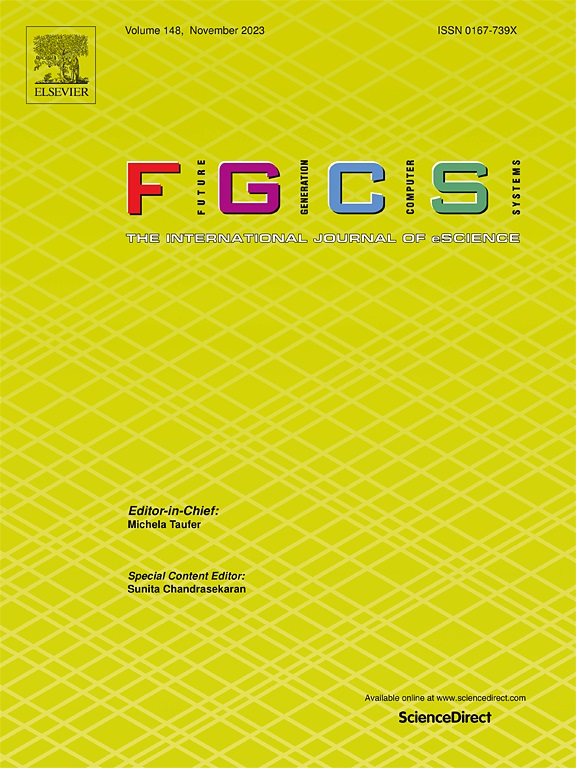Can LLM-generated misinformation be detected: A study on Cyber Threat Intelligence
IF 6.2
2区 计算机科学
Q1 COMPUTER SCIENCE, THEORY & METHODS
Future Generation Computer Systems-The International Journal of Escience
Pub Date : 2025-05-08
DOI:10.1016/j.future.2025.107877
引用次数: 0
Abstract
Given the increasing number and severity of cyber attacks, there has been a surge in cybersecurity information across various mediums such as posts, news articles, reports, and other resources. Cyber Threat Intelligence (CTI) involves processing data from these cybersecurity sources, enabling professionals and organizations to gain valuable insights. However, with the rapid dissemination of cybersecurity information, the inclusion of fake CTI can lead to severe consequences, including data poisoning attacks. To address this challenge, we have implemented a three-step strategy: generating synthetic CTI, evaluating the quality of the generated CTI, and detecting fake CTI. Unlike other subdomains, such as fake COVID news detection, there is currently no publicly available dataset specifically tailored for fake CTI detection research. To address this gap, we first establish a reliable groundtruth dataset by utilizing domain-specific cybersecurity data to fine-tune a Large Language Model (LLM) for synthetic CTI generation. We then employ crowdsourcing techniques and advanced synthetic data verification methods to evaluate the quality of the generated dataset, introducing a novel evaluation methodology that combines quantitative and qualitative approaches. Our comprehensive evaluation reveals that the generated CTI cannot be distinguished from genuine CTI by human annotators, regardless of their computer science background, demonstrating the effectiveness of our generation approach. We benchmark various misinformation detection techniques against our groundtruth dataset to establish baseline performance metrics for identifying fake CTI. By leveraging existing techniques and adapting them to the context of fake CTI detection, we provide a foundation for future research in this critical field. To facilitate further research, we make our code, dataset, and experimental results publicly available on GitHub.
法学硕士生成的错误信息能被检测到吗:网络威胁情报研究
由于网络攻击的数量和严重性不断增加,各种媒介(如帖子、新闻文章、报告和其他资源)的网络安全信息激增。网络威胁情报(CTI)涉及处理来自这些网络安全来源的数据,使专业人员和组织能够获得有价值的见解。然而,随着网络安全信息的迅速传播,虚假CTI的加入可能会导致严重的后果,包括数据中毒攻击。为了应对这一挑战,我们实施了一个三步策略:生成合成CTI,评估生成CTI的质量,检测假CTI。与假COVID新闻检测等其他子领域不同,目前还没有专门针对假CTI检测研究的公开可用数据集。为了解决这一差距,我们首先通过利用特定领域的网络安全数据来微调大型语言模型(LLM)以生成合成CTI,从而建立可靠的基础事实数据集。然后,我们采用众包技术和先进的合成数据验证方法来评估生成数据集的质量,引入了一种结合定量和定性方法的新型评估方法。我们的综合评估表明,无论其计算机科学背景如何,人工注释者都无法将生成的CTI与真正的CTI区分开来,这证明了我们的生成方法的有效性。我们根据我们的真实数据集对各种错误信息检测技术进行基准测试,以建立识别虚假CTI的基准性能指标。通过利用现有技术并使其适应假CTI检测的背景,我们为这一关键领域的未来研究奠定了基础。为了便于进一步的研究,我们在GitHub上公开了我们的代码、数据集和实验结果。
本文章由计算机程序翻译,如有差异,请以英文原文为准。
求助全文
约1分钟内获得全文
求助全文
来源期刊
CiteScore
19.90
自引率
2.70%
发文量
376
审稿时长
10.6 months
期刊介绍:
Computing infrastructures and systems are constantly evolving, resulting in increasingly complex and collaborative scientific applications. To cope with these advancements, there is a growing need for collaborative tools that can effectively map, control, and execute these applications.
Furthermore, with the explosion of Big Data, there is a requirement for innovative methods and infrastructures to collect, analyze, and derive meaningful insights from the vast amount of data generated. This necessitates the integration of computational and storage capabilities, databases, sensors, and human collaboration.
Future Generation Computer Systems aims to pioneer advancements in distributed systems, collaborative environments, high-performance computing, and Big Data analytics. It strives to stay at the forefront of developments in grids, clouds, and the Internet of Things (IoT) to effectively address the challenges posed by these wide-area, fully distributed sensing and computing systems.

 求助内容:
求助内容: 应助结果提醒方式:
应助结果提醒方式:


